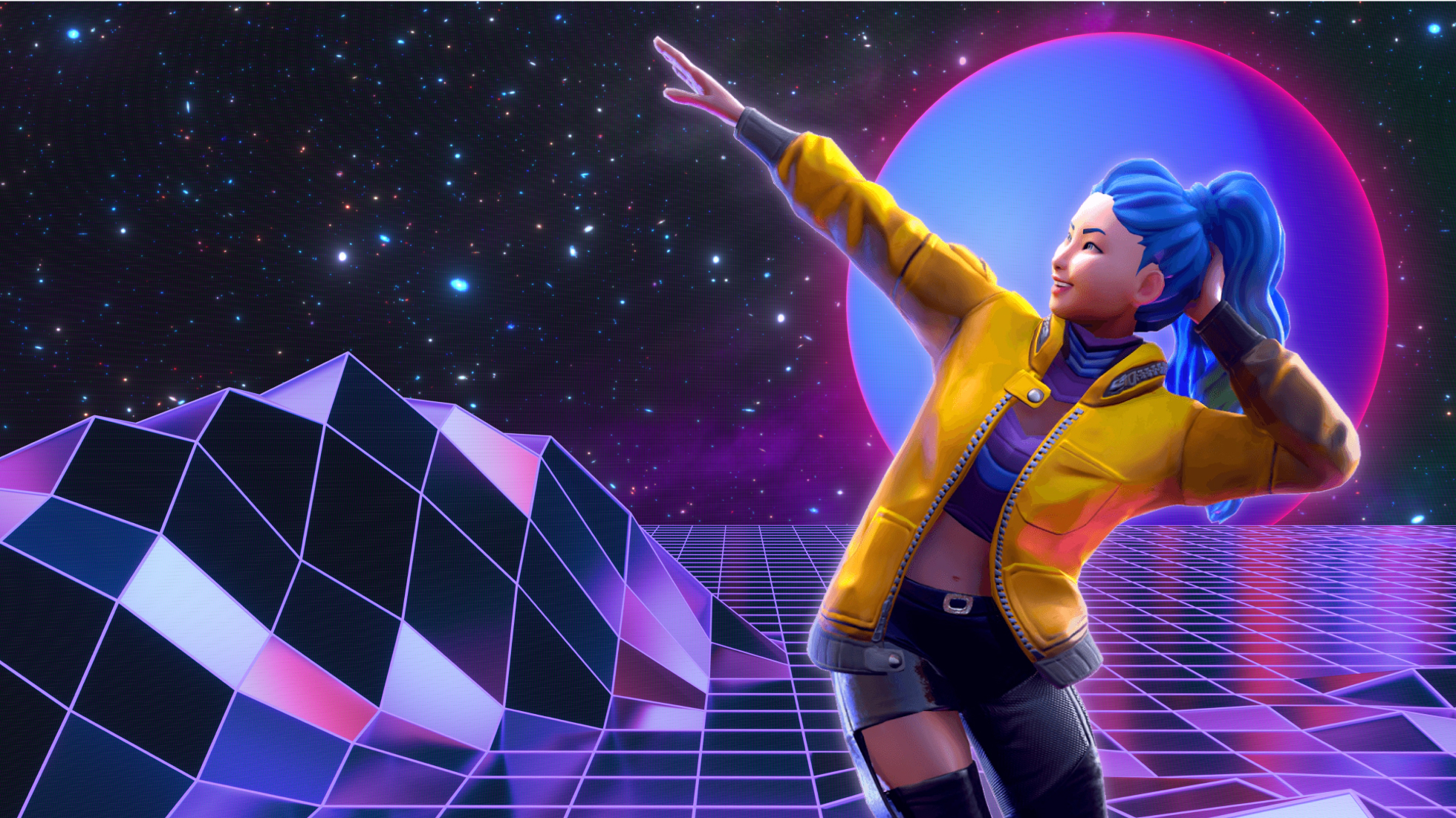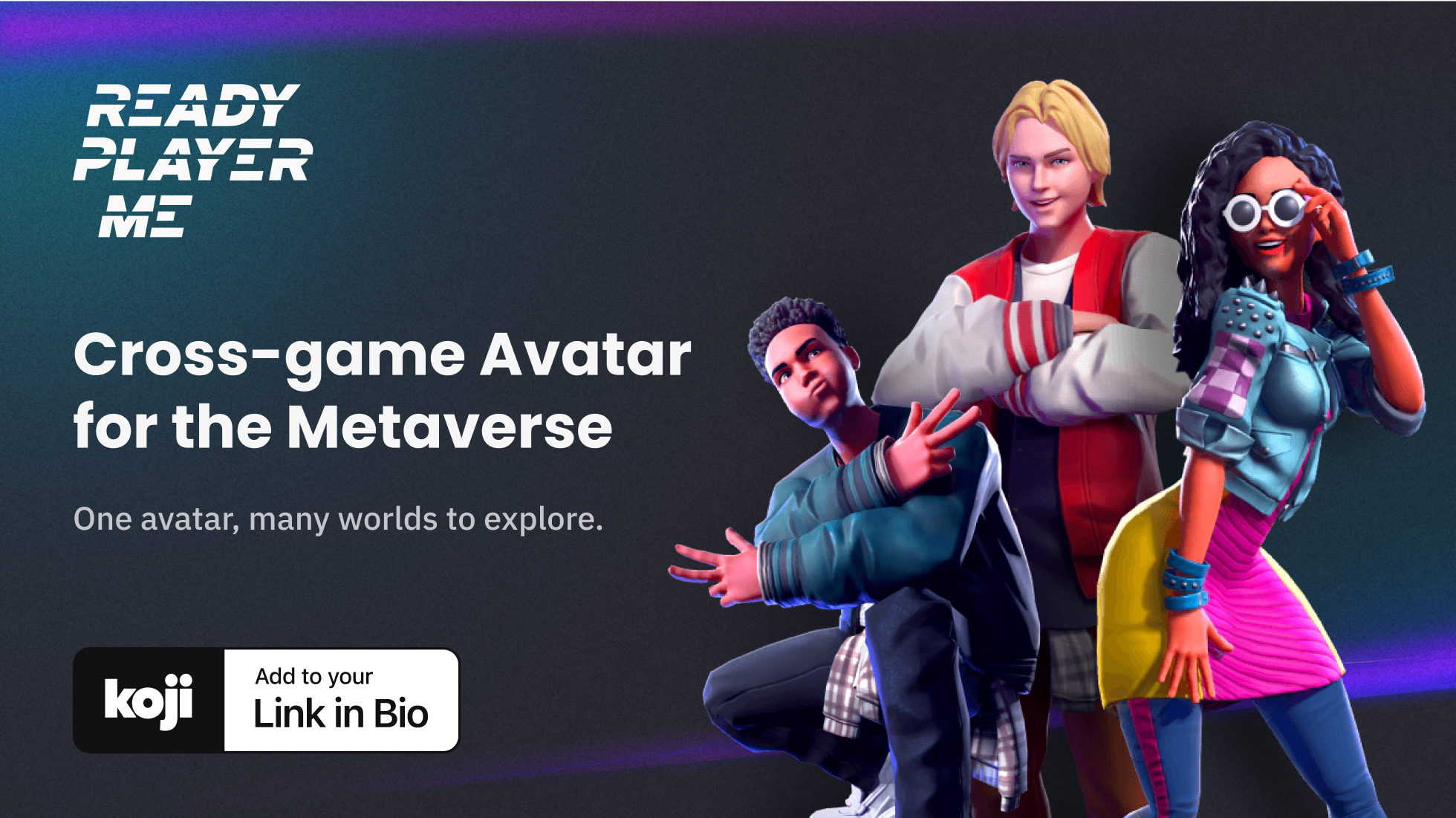For everyone, from teenage TikTok influencers to billionaire NFT collectors, digital identities are becoming messier and harder to manage. How do we organize and present our public selves in a world whose foundations are shifting by the day?
This article explores the role of the Link in Bio in centering our digital identities, while preserving authenticity and autonomy—and what that means as the boundaries between our digital and physical realities continue to blur.

Today’s Creators Need To Be On Every Platform
It used to be that influencers and content creators could be hugely successful by just focusing on a single platform. You’d be a Viner, a YouTuber, an Instagram influencer; and that was enough.
We still see this when new networks bring with them new formats and dynamics, where the rules of the popularity game haven’t yet been codified. The novelty of the format creates an opportunity for new or previously unknown creators to find success by investing in the new platform, and entwining themselves with it as it grows.
But over time, as the new network matures, its unique formats and dynamics either become commoditized by big social networks (e.g., Stories, Clubhouse), and/or it grows into a big social network of its own, where it starts to look more and more like all the others.
Creators, too, must be careful not to tie themselves too tightly to a specific platform. They can leverage the novelty of a new platform to make a name for themselves, but the only long-term, sustainable play is to use that as a way to achieve escape velocity and grow as an independent brand.
It’s a requirement for the modern creator to exist on multiple networks. It’s why so many profile bios feel like Choose Your Own Adventure games. A bio on Twitter says “Follow me on Instagram.” Instagram gives you a profile whose bio says “Find me on TikTok,” and then maybe TikTok goes back to Instagram, but also tries to get you to join OnlyFans or Patreon. Eventually, you either hit a dead end, or you end up right back where you started.
Fragmentation Is Holding Back Success
This fragmentation is not only a massive frustration for creators—diffusing their brand and their focus—but is also one of the biggest things holding back innovation in the Creator Economy.
Even when new platforms and tools might be compelling and lucrative, it’s hard for creators to make the decision to add another “thing they do” into the mix. They’re already struggling to keep a strong, consistent, and active brand across the networks and services they do use.
If you’re a creator and you decide to start a Patreon, how much of your audience do you start routing to that? How frequently do you promote it? Do you stop trying to drive your TikTok following to your Instagram, and instead start sending them to Patreon? Not to mention, even if only a few people subscribe to your Patreon, you’re still on the hook to produce exclusive content for them, otherwise they’re going to churn.
On the other side, a new creator economy company might be based around a single novel idea (like enabling creators to take paid video requests from their audience), but that’s not good enough. They need to build a full app—with their own accounts, profiles, discovery, followers and following, &c.—because they need to convince creators to make a serious investment in using their tool and routing traffic to it. They’re implicitly positioning their own adoption as a tradeoff for creators against growing their audiences on other platforms.
This is all to make the point that creator fragmentation is a fundamental issue. Today’s creators are forced to spread themselves wide across all networks; and innovation in the creator economy is forced to be viewed through the lens of new networks, rather than simply new tools and interactions.
There’s an obvious need to introduce some kind of hierarchy—some overarching structure that takes all those disconnected multiplications of a creator’s identity and transforms them into simply expressions of a single, holistic self.
Which account is the most real you? Your TikTok profile? Instagram profile? Substack?
The Link In Bio Creates Hierarchy Around Your Identity
Today, the closest thing we have to this “meta profile,” or centralized identity, is the humble Link in Bio.
In its simplest form, the Link in Bio is a single-page website that serves as a router to your presences on every other network, other services and tools you use, and sometimes even causes you support.
It’s a simple and elegant solution, in part because all social media apps use webviews to render links (so that when you’re finished looking at a website, you go back to browsing Instagram or TikTok instead of your phone’s home screen), which makes the experience feel seamless and native.
Purely as a utility, the Link in Bio is already a powerful tool (some people even pay monthly fees to use them). But it’s not particularly interesting on its own.
The real, unsaid value of the Link in Bio is as a tool that creates a hierarchy for your digital identity. It becomes the “parent” to your presence across social networks, letting your audience move “up” to a central hub that you control, rather than simply jumping from network to network.
The Link In Bio Is The Real You
Through this lens, the importance and power of the Link in Bio becomes obvious: it’s “you.” The canonical you. The real one. Your profiles on other social networks are simply slices of you, not the whole thing.
The Link in Bio becomes not just a utility, but a destination. Not just a router, but a “launcher” for all the ways in which someone can interact with you.
One way to think about it is like your phone’s home screen. But, instead of adding and organizing apps for you to use, you’re adding and organizing apps that other people can use to connect and interact with you.
Some of those apps might help people follow you on different networks. Others might be simple, isolated experiences, like a guestbook or a virtual tip jar. Some might be as simple as a way to share your favorite playlists or memes.
The flexibility provided by this model diminishes the risk of promoting or experimenting with new types of interactions. Your followers don’t need to try to understand whether you’re a TikToker or a YouTuber or a Substacker (?) — you’re just “you.”
Koji Is Building The App Store For The Creator Economy
Of course, what’s a launcher without an app store?
While Koji’s Link in Bio launcher is only a few months old, we’ve spent the past two years building an app store and virtual operating system to support a new generation of apps that live on it.
The Koji App Store brings creators new tools for expressing themselves, engaging their audience, and monetizing. Thanks to webviews, these tools already run inside every social network’s apps. They don’t require you or your audience to download or install anything, and they aren’t subject to the 30% App Store Tax like native apps are.
But that’s a topic for a different day—we’re here to talk about the future of digital identity.
Digital Identity And The Metaverse
The issues of fragmentation are already acute, and they’ll only get worse with each new platform, innovation, and tool that takes hold in the social space.
Think about NFTs. The past few months have seen massive innovation in the creation of places to buy them, sell them, and mint them. But what’s next?
If you make the comparison to traditional art collecting, buying and selling is only a small part. Curating and flexing your collection is the real game. You might loan some high-value pieces to a museum and get your name on a plaque, or turn a wing in your country estate into a gallery for guests to browse.
But what are you supposed to do with NFTs? Sure, you can pick your most interesting one and use it as your profile picture, and there are some tools that help you to create digital galleries, but these all feel a bit weak.
If you start to think about the Link in Bio as being your “digital home” in the Metaverse, the right solution is for it to have an app that opens your digital gallery. The gallery is simply one facet of your identity—you don’t want to turn your entire social media presence into a constant promotion for your collection—but it’s a meaningful part of who you are, and one that deserves to be shared with those who care.
As the world moves in these exciting new directions, Koji has built a foundation for these new types of expression.
Ready Player Me Personal 3D Avatars
One of the first publicly-visible steps in that direction is today’s launch of Wolf3D’s Ready Player Me app. Ready Player Me is an avatar platform that lets you create a 3D avatar with a selfie.
When you play one of over 200 games or interactive experiences that integrate with their technology, your Ready Player Me avatar automatically comes with you, helping you to maintain a consistent visual identity across the Metaverse.
Ready Player Me’s new Koji App brings their innovative selfie-based avatar creation and editing tool to Koji, giving you a way not only to create and update your avatar, but also a way to render it on your Link in Bio for others to see and interact with.

This acts as both a way to show off (you can customize your avatar with NFTs and other digital goods); and provides utility value as a pseudo-signature, verifying that the avatar is actually the real you.
If all your social media presences direct to your Koji Link in Bio, that consensus then serves to authenticate any other apps on your Link in Bio as being associated with you. So if you see an avatar running around the Metaverse that looks familiar, the easiest way to validate it is by finding that person on social media and looking for the avatar on their Link in Bio.
Plus, what better place for your digital avatar to live than inside your digital home. Where else would it sleep?
Final Thoughts
This more high-level and forward-looking vision around identity isn’t a framing we talk about publicly too much—there are many more clear, practical opportunities and obstacles to address within a shorter horizon—but it’s part of the reason we’re so excited about something that, on the surface, might look like a simple list of links.
The problems around fragmentation, autonomy, and identity faced by today’s influencers are small preludes to what’s right around the corner, and we’re excited to be joined by developers like Wolf3D who are anticipating, and solving, those problems today.
Related Links
Ready Player Me in the Koji App Store
Official Ready Player Me Announcement
